How to Plant your DIY Edition
When you have a Pollinator Pathmaker design you’d like to plant, download your Planting Instructions PDF (find the button at the bottom right of the page where you see the garden you created). The PDF includes a certificate of authenticity for your unique design, planting plans, a plant shopping list, and a quick guide to planting.
This page offers more suggestions on how to plant and maintain your DIY-Edition.
Download a PDF of this page.
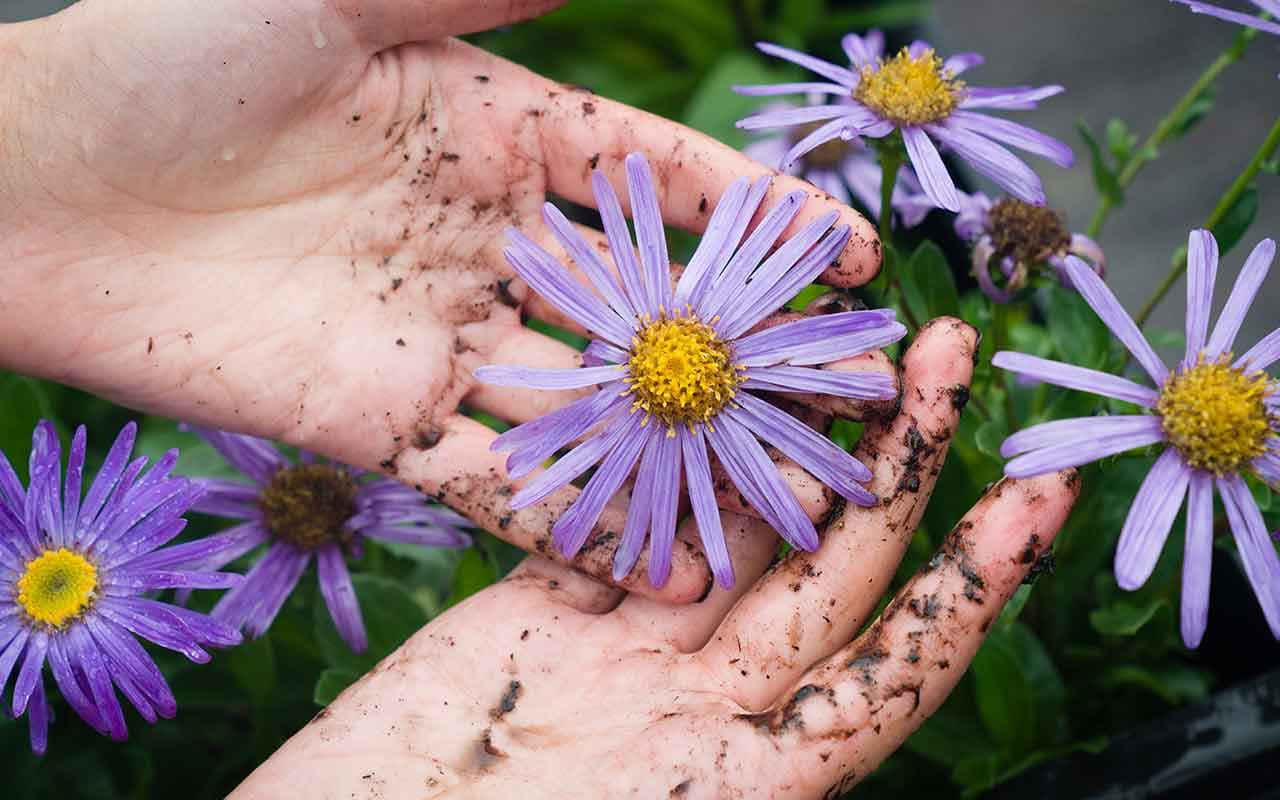
Aster amellus ‘King George’ ready to be planted in the Eden Project Edition. Photo: © Steve Tanner.
Don’t forget to share photos of your DIY Edition via Instagram using #pollinatorpathmaker or with us at pollinator.art/about/contact. Follow us @pollinatorpathmaker and check out our growing gallery of DIY Editions.
Getting Started
It’s best to plant your artwork in early autumn (Northern Hemisphere: September/October) before frosts return or in spring after the last frost (Northern Hemisphere: usually March/April). The plant palettes used by Pollinator Pathmaker contain mostly perennials, which will thrive for 3-5 years, some biennials (which last 2 years) and a few annuals (planted every year).
Don’t have a garden?
If your garden is a large window box or in pots, scale down the planting density. Read how to do this below.
Why not see if you can find a bigger space? If you want to plant in a place like a school or community space please fill in this short application form so we can consider your request, since Pollinator Pathmaker DIY Editions are for non-commercial, private use only. We are looking for ways to support this part of the campaign. Get in touch if you can help us!
Buying your Plants
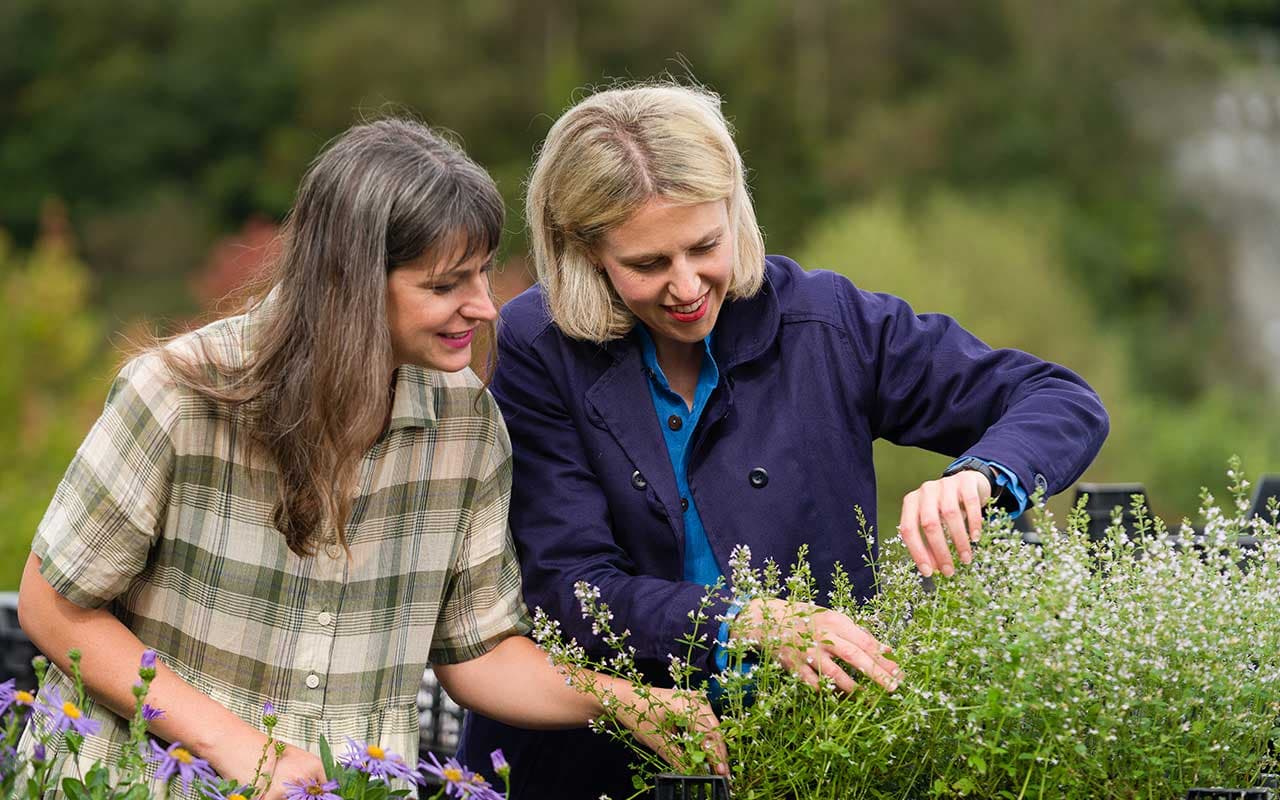
Eden Project curator Misha Curson and Alexandra Daisy Ginsberg during the planting of the Eden Project Edition. Photo: © Steve Tanner.
Traditional garden planting often means using around five plants per square metre, leaving bare soil between plants. Pollinator Pathmaker follows a more naturalistic approach, which typically means twelve or more plants per square metre. This is less dense than a wild plant community like a meadow, but still means there is not much earth showing. This aesthetic choice also means less weeding.
The cost of planting your DIY Edition will depend on the size of your garden, your soil, the plants used, plant density, and what size plants you buy.
Some species use more than one plant per pixel. Using smaller pot sizes that are typically available as garden-ready plants, your DIY-Edition will take a couple of years to look its best. If you’re making a ‘show garden’ to look good fast, then buy bigger plants.
Plants grow (!) so buy to suit your budget and timeline. You could buy plug plants (seedlings), 9cm plants, or splash out and go bigger. Alternatively, plan ahead and buy seeds to propagate. Many perennial plants can be divided after a year, or you can take cuttings and grow new plants. Some wilder species can be sown directly as seeds (check the instructions on the seed packet and plant the right number for your pixel area). Big gardens may require a trade nursery to supply large quantities, so plan how you source.
Some plants will need to be replaced sooner than others (a year, two years, and so on) and some self-seed.
Try to choose a nursery or garden centre which uses peat-free compost and no pesticides. Plant size doesn’t matter, but look for strong, healthy plants. Wildflower plug plant nurseries can help with some species that garden centres may not stock (these may sell more ‘cultivars’, or bred varieties of a species). Online gardening resources can point you to stockists for particular plants. And clean and reuse the pots any plants arrive in for new seedlings.
Scaling down
To make a scheme fit a smaller plot, scale down the planting. However, different species of plants grow to different sizes, so reducing the design to one plant per pixel doesn’t always work if you are planting in pots, for example. Plants that are recommended for planting as one or two per pixel will generally grow quite large in time. Plants suggested for three or more per pixel will be smaller. If you have a large pot that is around half a metre in footprint (the size of a pixel), you could plant at the recommended densities. For a pot half that size you can either reduce the density or, where a plant is growing large, divide the plant when it gets too big (dig it out and halve or quarter it with a spade or trowel and replant, and give away the leftover parts to friends and family). For pots it is important to remember that you will need to water them frequently in dry weather and feed them at regular intervals (a liquid feed will be fine).
For much smaller planting, such as a window box, you’ll need to check whether each plant is suitable, based on its size when fully grown and substitute it with another plant if needed (see below).
Edges
If you don’t want a pixelated (jagged) edge for your planting, trim the pixels that bleed over your boundary line and reduce the planting density for each accordingly.
Multiple species
You may find that some pixels in your planting design show two or three plant species. Some plants, such as alliums, have a short flowering season, so a different plant that flowers later is added to the pixel. This provides forage for pollinators for a longer period.
Some pixels may also show a green dot indicating a grass to be planted under certain plants that lose their leaves quickly. This grassy ‘matrix’ helps to prevent weeds spreading over bare soil and provides habitat for pollinators and other wildlife.
Some pixels also include a green dot indicating a grass to be planted under certain perennials that lose their leaves quickly. This helps to stop weeds spreading over bare soil and also provides habitat for pollinators and other wildlife.
Substitutions
If a plant in your scheme isn’t in stock, you can substitute a similar one for it. Start by searching for another cultivar of the same species. Some cultivars are bred to look or smell better to us, but as a result they are less beneficial to pollinators. Check that any substitutes are pollinator friendly, and if you’re very precise, ensure they suit the same pollinators and flower at the same time. You may need to make substitutions if you have shady areas in a mainly sunny garden, for example. Research plants’ preferences before you buy.
Toxic plants
The Plant Palettes include familiar and common garden plants, some of which can be toxic to pets, animals, or humans. Use gardening guides to verify that each plant fits your needs before you buy, just as you would for any other garden planting.
Preparing the Site
Soil Preparation
Remove any unwanted vegetation, including roots. Dig or fork the soil over, and for best results incorporate organic matter. For this, you can use your own garden compost or buy peat-free compost and organic fertiliser, using the quantity recommended for the size of your grid.
Laying out your plants
Mark out the length and width of your grid with string and pegs. Then divide the grid into 0.5m by 0.5m pixels.
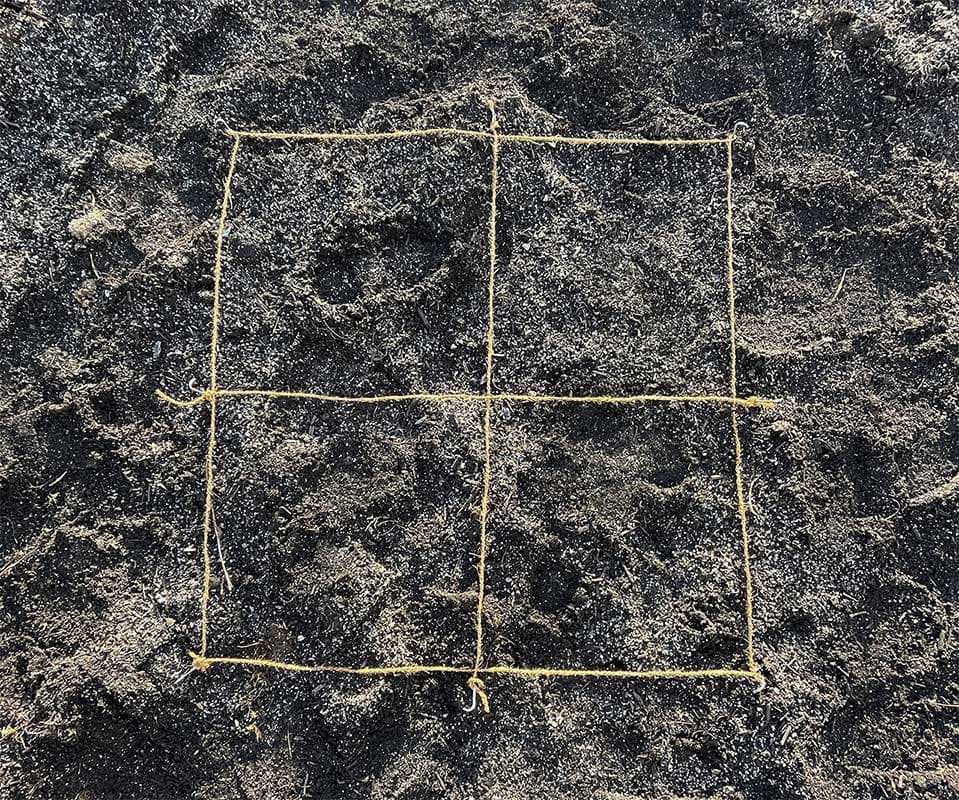
Lay out your plants in each pixel, following the planting design and suggested density. Arrange them a little randomly, but leave space between each plant and the pixel edge.
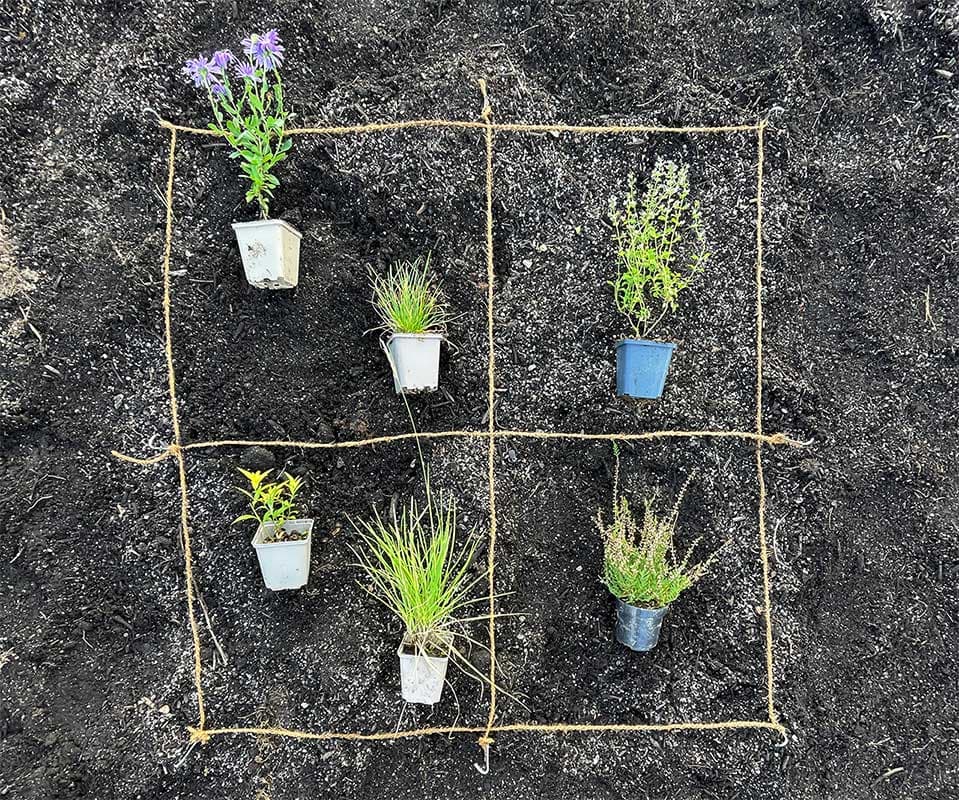
Planting
Break up the soil around and below where each plant will go. Dig a hole matching the size of the pot the plant was in. Pour a cupful of water into the bottom of the hole.
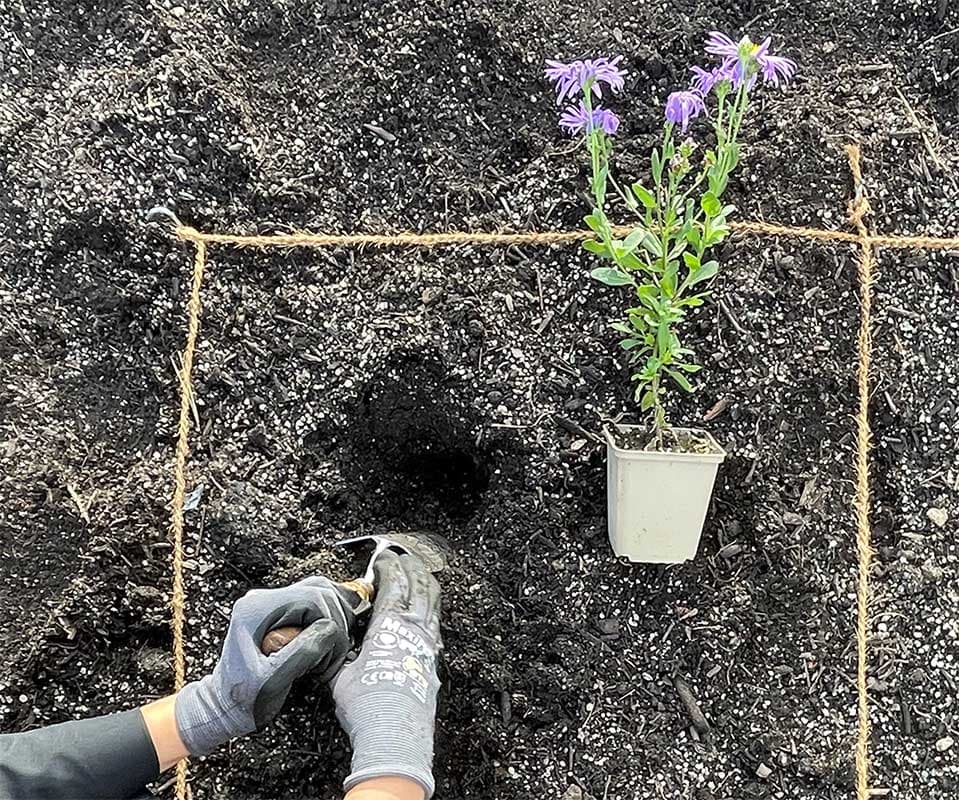
Gently knock the plant out of the pot, delicately loosening the roots if it is rootbound, and pop it into the hole. Make sure the soil around the hole is at the same level as the compost the plant is in.
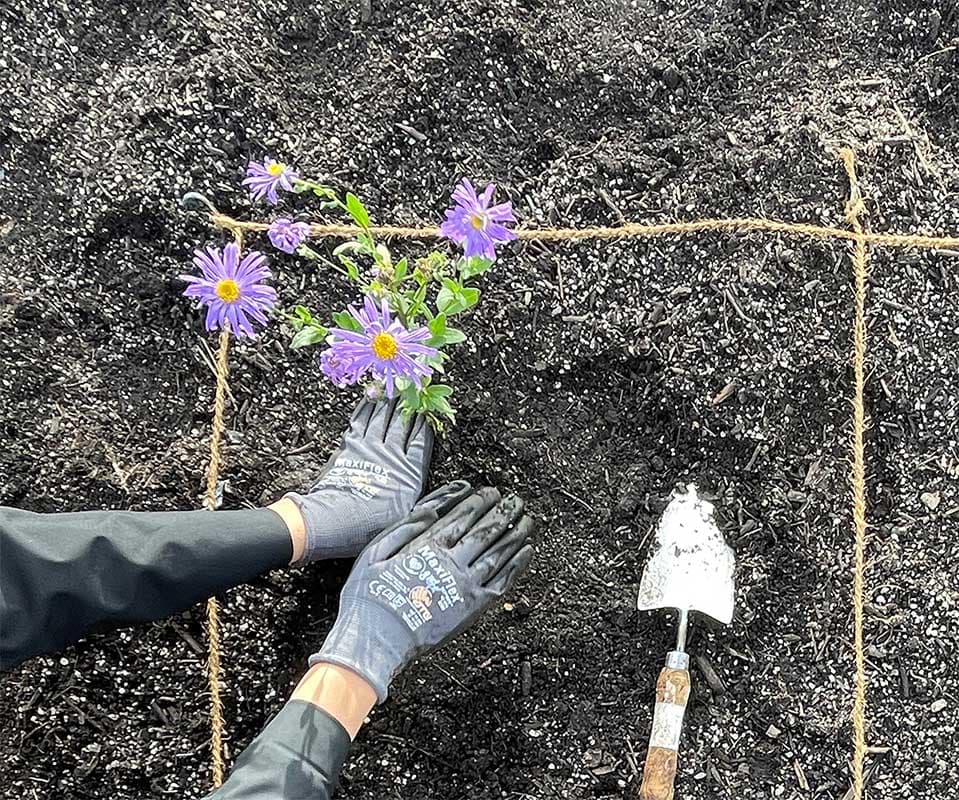
Firm the soil around the new plant and, if the soil is dry, water again.
Looking after your DIY-Edition
Watering
If the weather has been dry, water the plants at ground level to ensure the roots get a good soaking. Make sure you water regularly in the first couple of growing seasons.
Weeding
‘One year’s seedling, seven years weeding’. Pull out weeds by hand before they seed.
Deadheading and spring cut
Removing dead flowers, or ‘deadheading’, is often done to stimulate the production of fresh buds in early summer. It can prolong the flowering time of your plants.
However, seedheads and dead stems provide valuable food and shelter for wildlife, as well as beautiful winter interest. Leave plants for as long as possible over winter. This advice from the RHS website explains how stems can all be cut back in the spring when they start to decay and lose their structure.
Use shears or secateurs to cut stems back, being careful to cut above any new growth. Check amongst the grasses and seedheads for any wildlife that may have made themselves a home. You don’t want to disrupt a hedgehog habitat or a seedhead that’s providing refuge to a lacewing. If your Pollinator Pathmaker bed is large, you can even mow or strim it, but do it a section at a time to allow wildlife to move away, and check for any remaining wildlife or nests.
Mulching
You can shred plant material and leave it on the soil surface to form a mulch that will rot down and recycle nutrients. Or you can recycle it in your compost heap and apply it the following year.
Pixels gone wild
More vigorous plants will spread over time. In late autumn or early spring they can be divided and reduced in size, so they don’t overcrowd their neighbours. If more successful plants spread beyond their original pixels, or pop up elsewhere, it’s up to you whether you let it go wild or keep the grid intact.